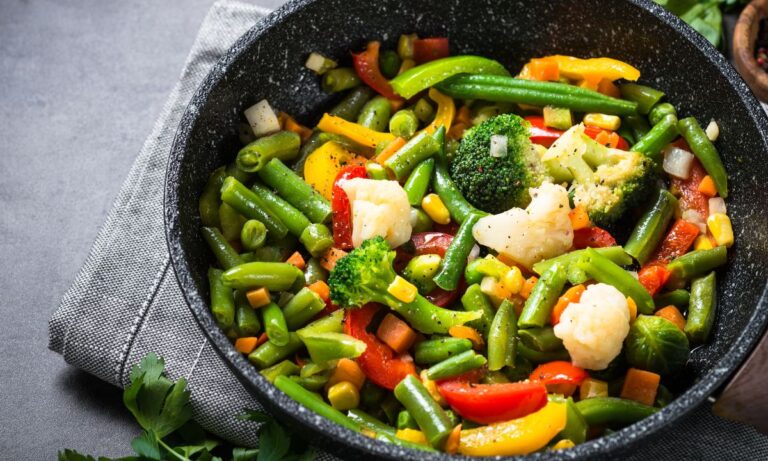Fruits and Vegetables Available in Spring Season
Introduction
Fruits and Vegetables Available in Spring Season is a delightful season when the earth wakes up after a long, cold winter. The blossoming trees and blooming flowers paint the world with vibrant colors. Along with these visual treats, the season also brings a bounty of fresh, delicious, and nutritious fruits and vegetables. In this article, we will explore some of the best spring produce, their health benefits, and how to incorporate them into your diet.
The Importance of Seasonal Produce
Eating seasonally is not only beneficial for your health but also for the environment. Seasonal produce tends to be fresher, more flavorful, and more nutritious. When you consume fruits and vegetables in their peak season, you can enjoy them at their best. Additionally, buying seasonal produce supports local farmers and reduces the carbon footprint associated with transporting food from far-off places.
Fruits in Spring
Spring is the perfect time to enjoy a variety of delicious and juicy fruits. Here are some of the most popular spring fruits:
- StrawberriesThese sweet and juicy red berries are a springtime favorite. Packed with vitamins, fiber, and antioxidants, strawberries are a healthy and delicious addition to your spring diet.
- ApricotsApricots are small, golden-orange fruits with a soft, velvety skin. They have a sweet and slightly tart flavor, and are rich in vitamins A and C, potassium, and fiber.
- PineapplePineapple is a tropical fruit that becomes readily available during spring. It is an excellent source of vitamin C, manganese, and bromelain, an enzyme that aids digestion and reduces inflammation.
- CherriesCherries are small, round fruits with a deep red color and a sweet, slightly tart taste. They are rich in antioxidants, particularly anthocyanins, which can help fight inflammation and protect against various diseases.
- MangoesMangoes are juicy, sweet, and flavorful fruits that start appearing in spring. They are high in vitamins A and C, fiber, and antioxidants, which help support a healthy immune system.
Vegetables in Spring
Spring is also a great time to enjoy a variety of fresh and nutritious vegetables. Here are some of the most popular spring vegetables:
- Asparagus Asparagus is a versatile and delicious spring vegetable. It is low in calories and high in nutrients like vitamins K and C, folate, and fiber.
- PeasFresh spring peas are sweet, tender, and packed with vitamins, minerals, and protein. They are a great addition to salads, stir-fries, or simply eaten raw.
- ArtichokesArtichokes are flavorful vegetables that are available during spring. They are high in fiber, antioxidants, and various nutrients, including vitamin C, folate, and magnesium.
- SpinachSpinach is a leafy green vegetable that thrives in spring. It is a great source of vitamins A, C, and K, iron, calcium, and antioxidants.
- Spring OnionsAlso known as scallions or green onions, spring onions are a flavorful and versatile ingredient. They are rich in vitamins A and C, as well as various minerals and antioxidants.
Health Benefits of Spring Produce
Consuming spring fruits and vegetables provides numerous health benefits. These seasonal foods are typically rich in vitamins, minerals, and antioxidants that help support a healthy immune system, protect against diseases, and promote overall well-being.
How to Select and Store Spring Produce
When selecting spring fruits and vegetables, look for produce that is fresh, vibrant in color, and firm to the touch. Avoid produce with bruises, soft spots, or signs of decay. To store most spring produce, keep it in the refrigerator, either in the crisper drawer or in a ventilated plastic bag. Some fruits, like apricots and mangoes, should be stored at room temperature until ripe and then refrigerated.
Incorporating Spring Fruits and Vegetables into Your Diet
There are countless ways to enjoy spring produce. You can eat fruits and vegetables raw, toss them into salads, or use them in smoothies. For a warm meal, try roasting or grilling vegetables like asparagus, artichokes, or spring onions. You can also incorporate spring fruits and vegetables into soups, stir-fries, and other dishes.
Conclusion
Spring brings a bounty of fresh, flavorful, and nutritious fruits and vegetables. By incorporating these seasonal delights into your diet, you can enjoy their many health benefits and support local farmers and the environment. So, go ahead and savor the flavors of spring!
FAQs
- Why is eating seasonal produce important? Eating seasonal produce is important because it tends to be fresher, more flavorful, and more nutritious. It also supports local farmers and reduces the carbon footprint associated with transporting food from far-off places.
- Are there any fruits or vegetables to avoid in spring? No specific fruits or vegetables should be avoided in spring, but it is always a good idea to consume a variety of produce to ensure a balanced diet.
- Can you freeze spring fruits and vegetables? Yes, many spring fruits and vegetables can be frozen for later use. Just make sure to wash, dry, and cut them into appropriate sizes before freezing.
- How can I incorporate more spring produce into my diet? You can incorporate more spring produce into your diet by eating fruits and vegetables raw, adding them to salads, using them in smoothies, or cooking them in various dishes.
- What are some simple spring recipes I can try? Some simple spring recipes include strawberry spinach salad, grilled asparagus, artichoke dip, and mango salsa. You can also experiment with different combinations of spring produce to create your own delicious dishes.







